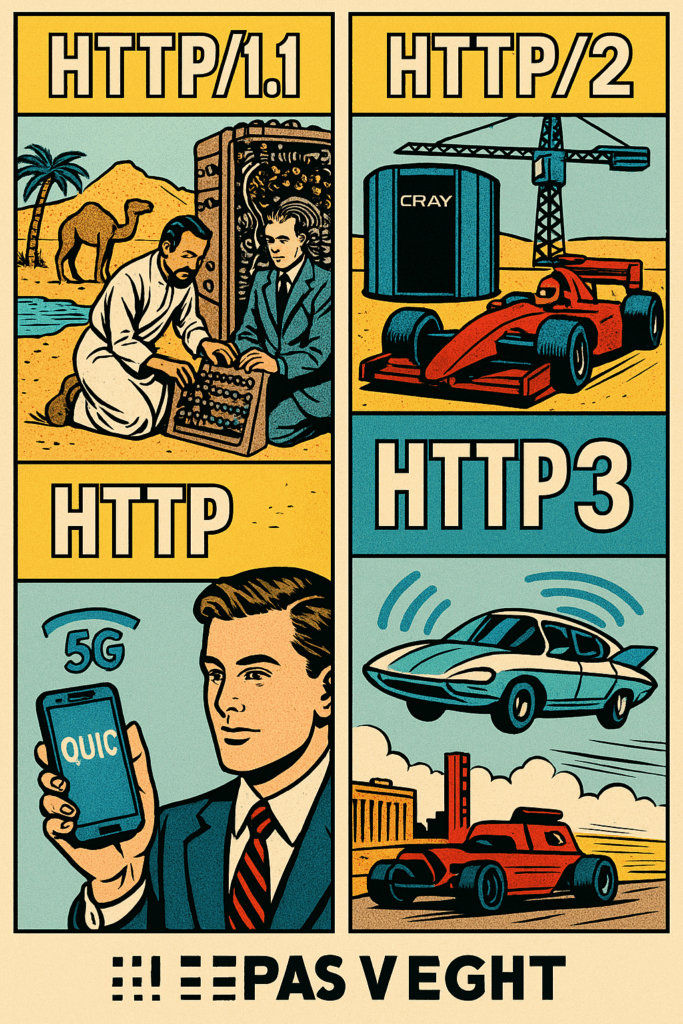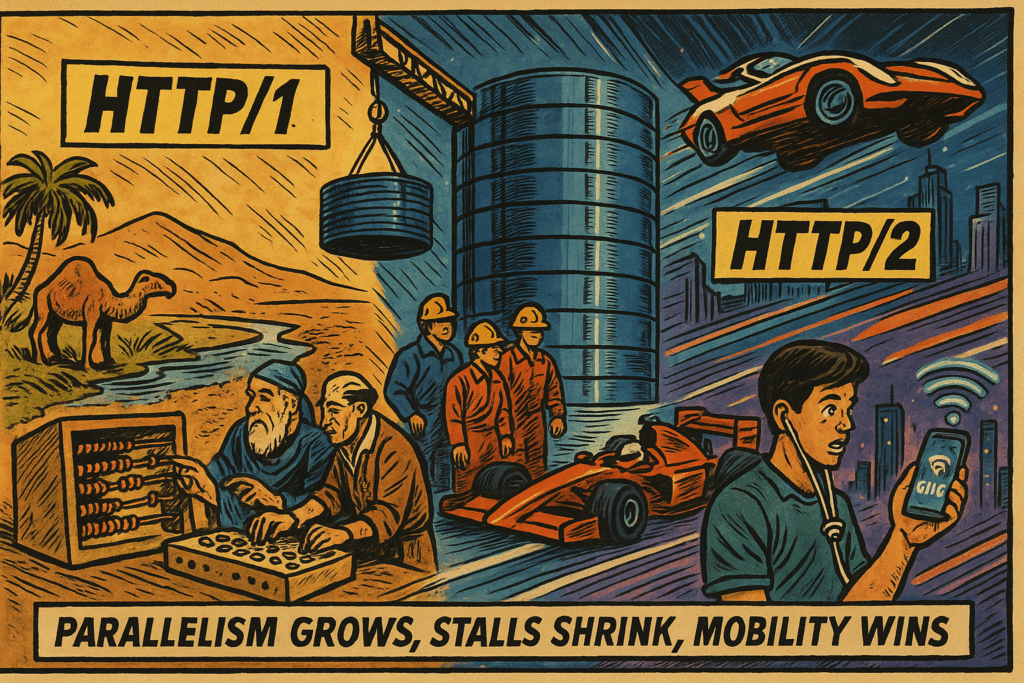Benefits of HTTP/3 Protocol
Benefits of HTTP/3 over HTTP/2 —
- One flaky packet doesn’t stall the whole page. In H2 (over TCP), if a single packet gets lost, all streams on that connection pause. In H3 (over QUIC), only the affected item slows down—the rest of the images/scripts keep flowing. Think: a news page with dozens of pics keeps loading smoothly even if one image hits a hiccup. (IETF Datatracker, GitHub)
- Faster start—especially for repeat visitors. H3 needs fewer back-and-forths to get going, and on a return visit it can start sending data immediately (0-RTT), so first bytes show up sooner. You feel it on “cold” loads and mobile. (The Cloudflare Blog, Akamai)
- Connections survive network changes. Move from Wi-Fi to LTE (or vice-versa) mid-load and the download keeps going instead of starting over. Great for phones on the move. (Internet Society Pulse, TECHCOMMUNITY.MICROSOFT.COM)
- Smoother on shaky Wi-Fi/cellular. QUIC’s loss recovery and per-stream flow control mean fewer visible stalls when the link is lossy or jittery. Pages feel snappier under real-world conditions, not just in a lab. (Zscaler, Cloudflare)
- Less meddling by middleboxes. More of the transport metadata is encrypted, which reduces weird edge-case slowdowns caused by old network gear trying to “help.” (You won’t see this, but you avoid mystery regressions.) (IETF Datatracker)
- Headers that don’t jam the line. H3’s QPACK was designed so header compression itself won’t cause those “everything waits” moments that H2’s HPACK can trigger. (IETF, Stack Overflow)
When will you notice H3 the most?
- On pages with many assets, over spotty or mobile networks, or when users frequently switch networks; on clean, wired links H2 already feels fast, so the gap is smaller. (Zscaler)


Visited 5 times, 1 visit(s) today
